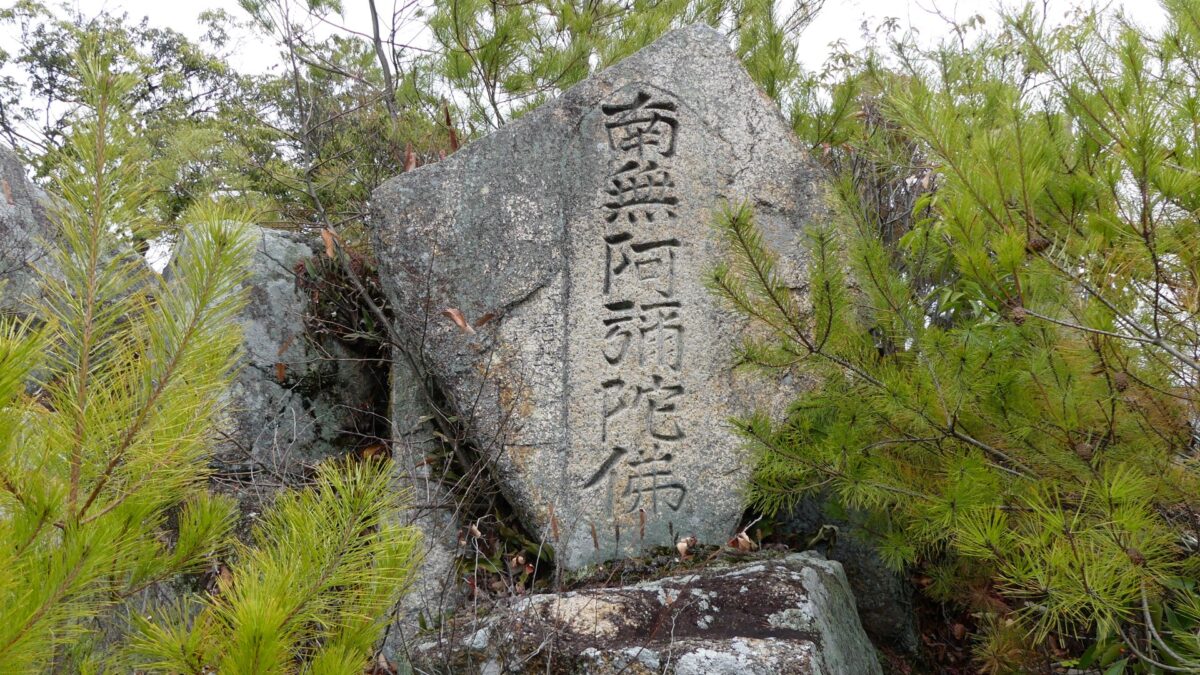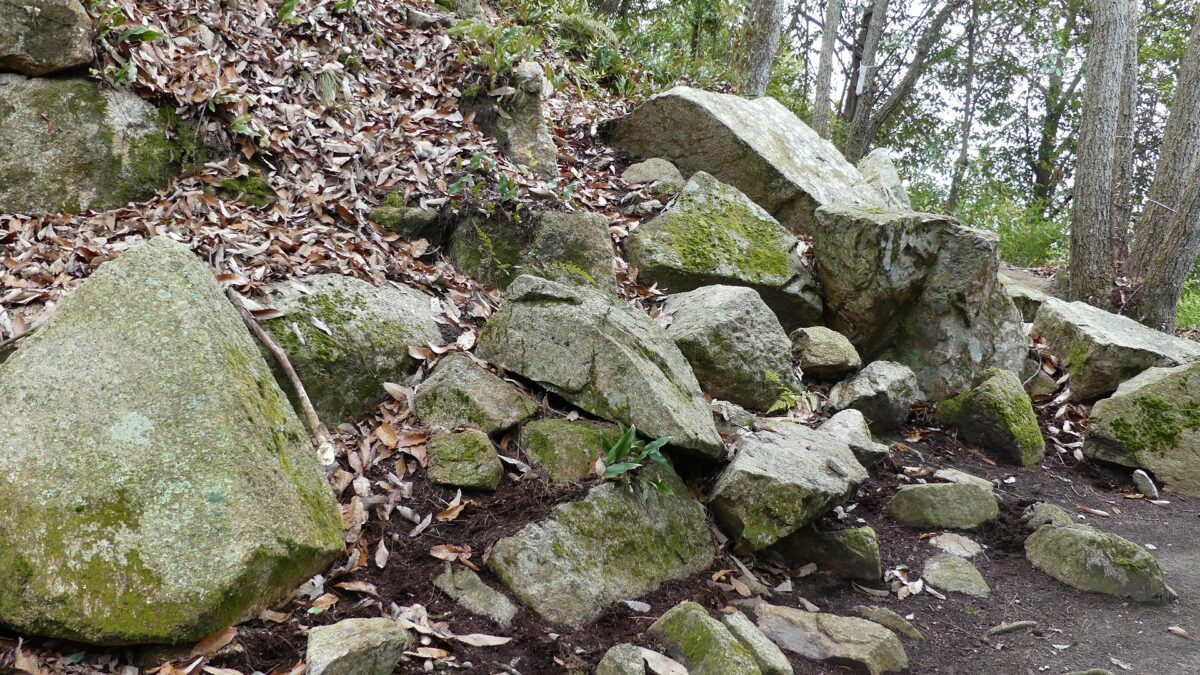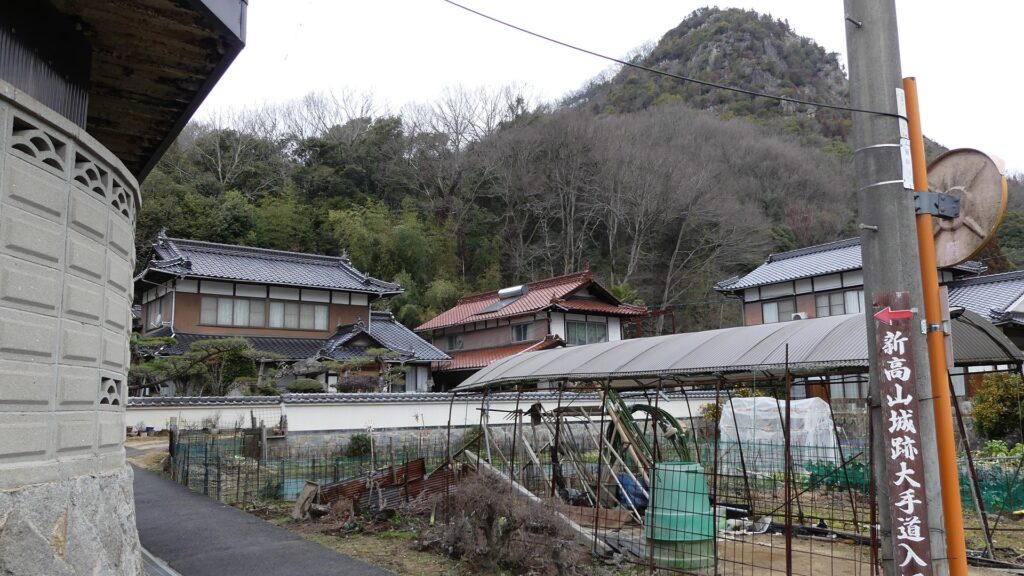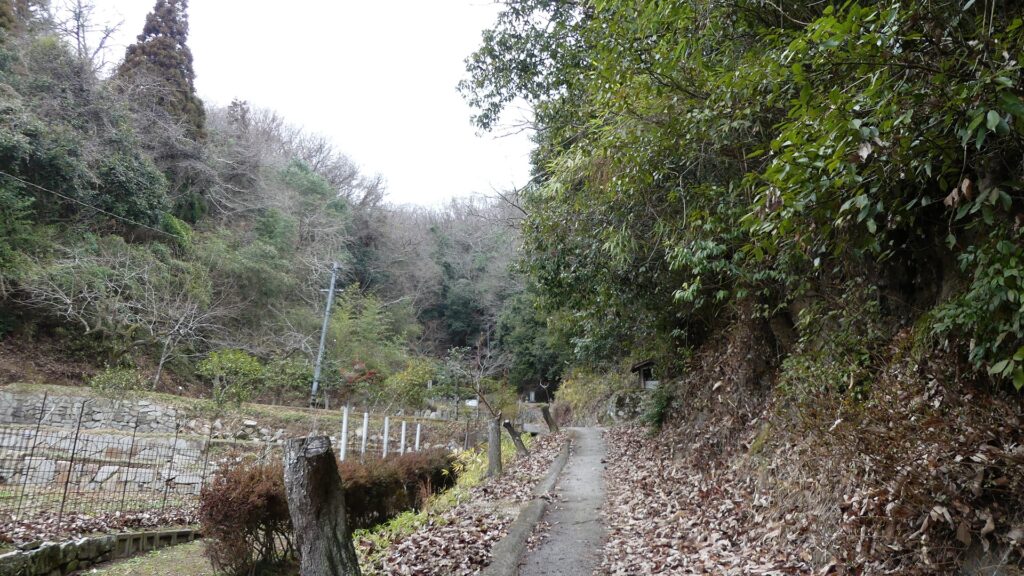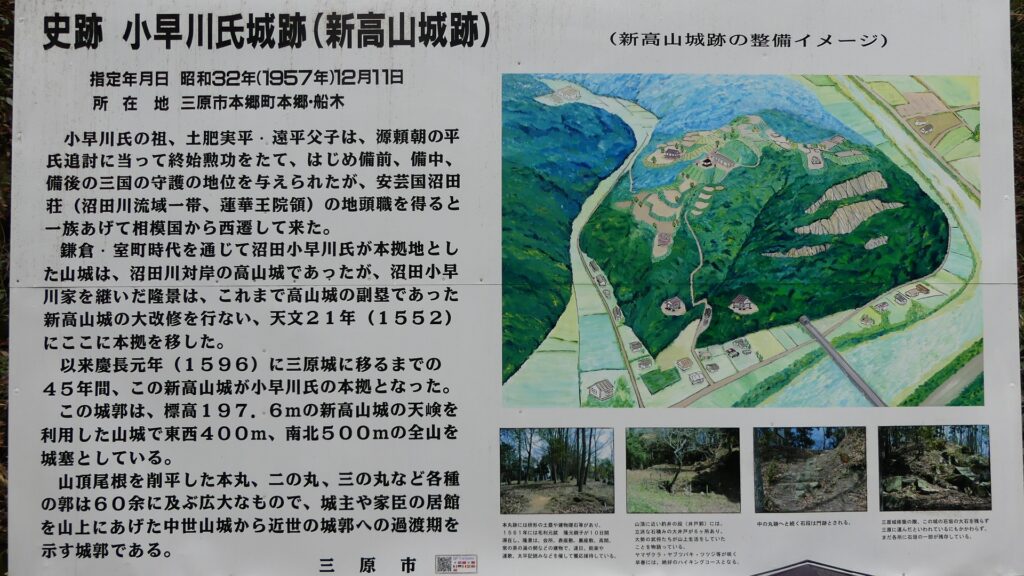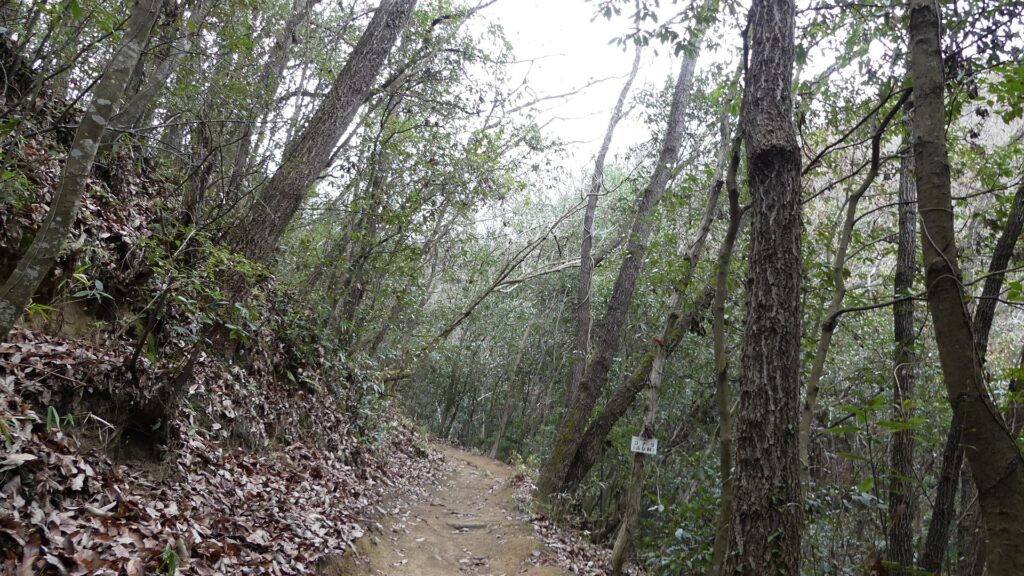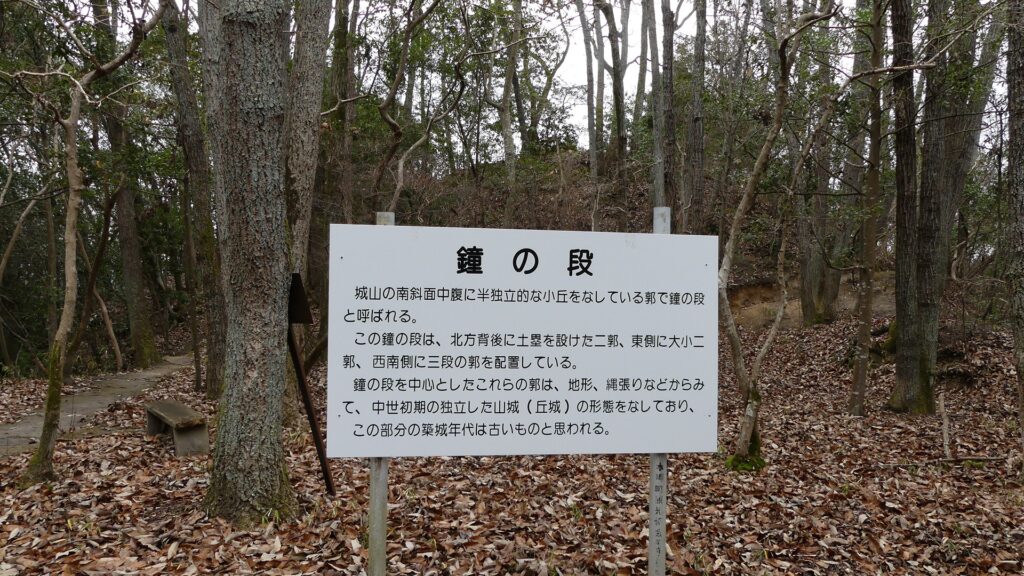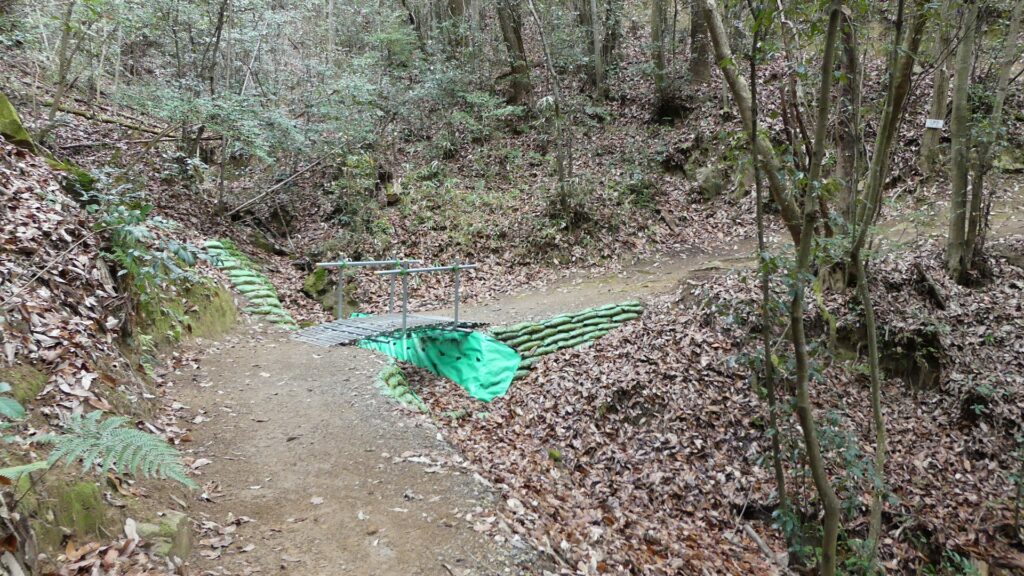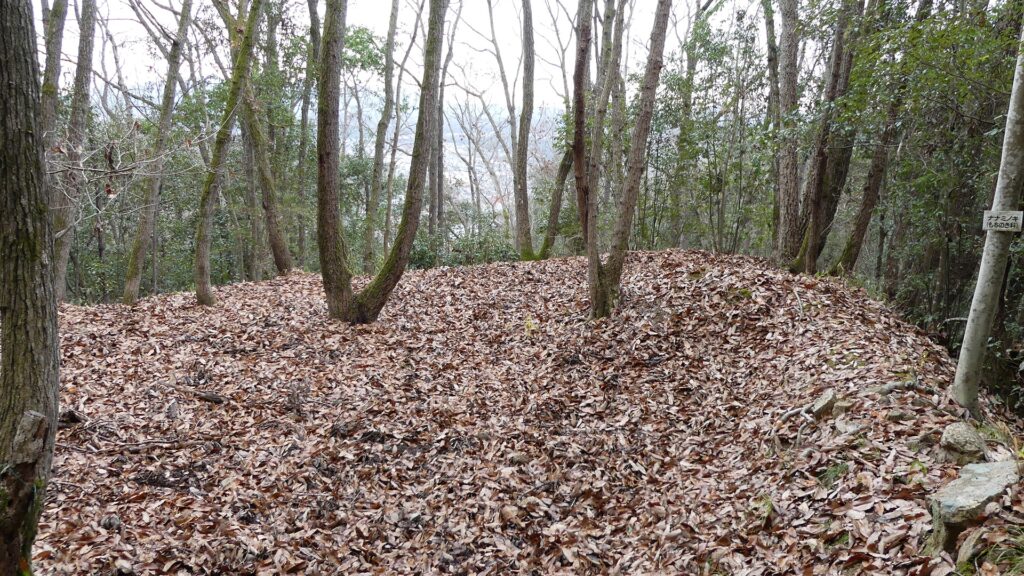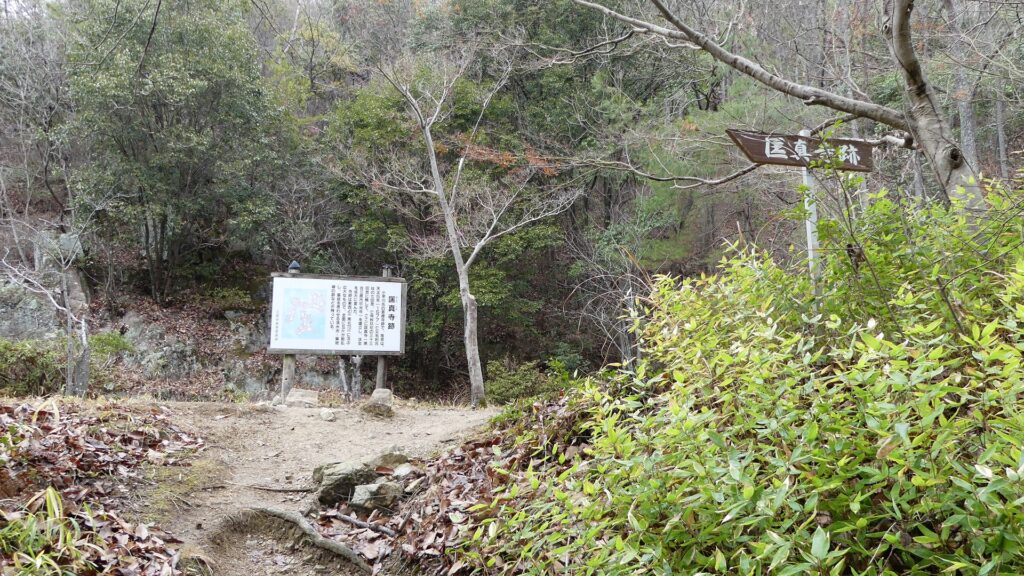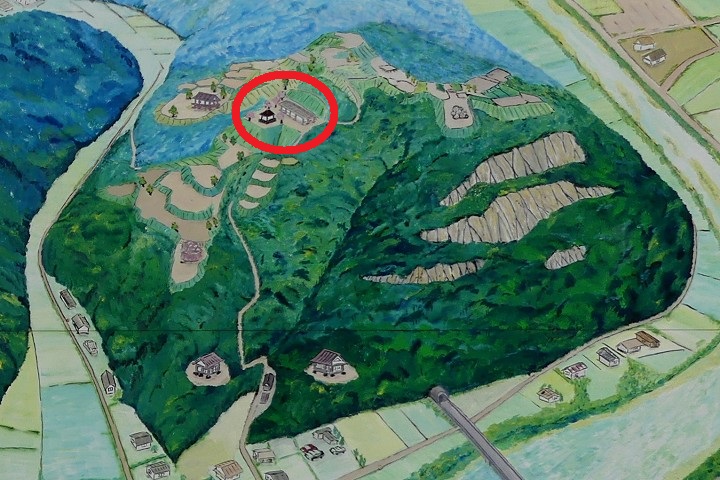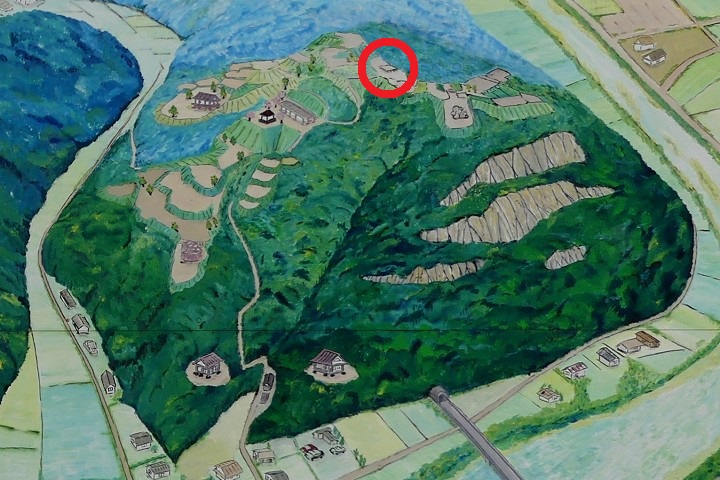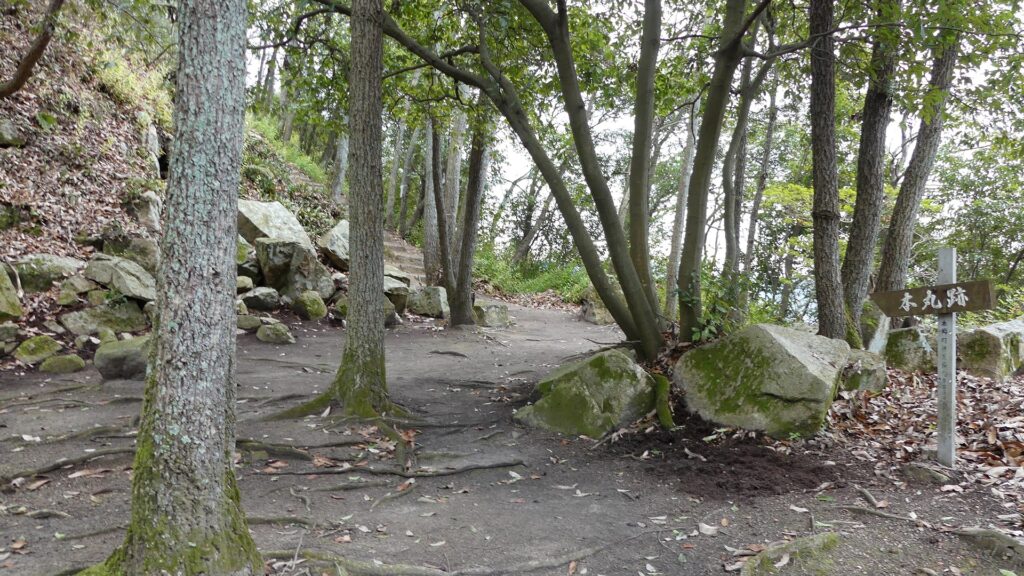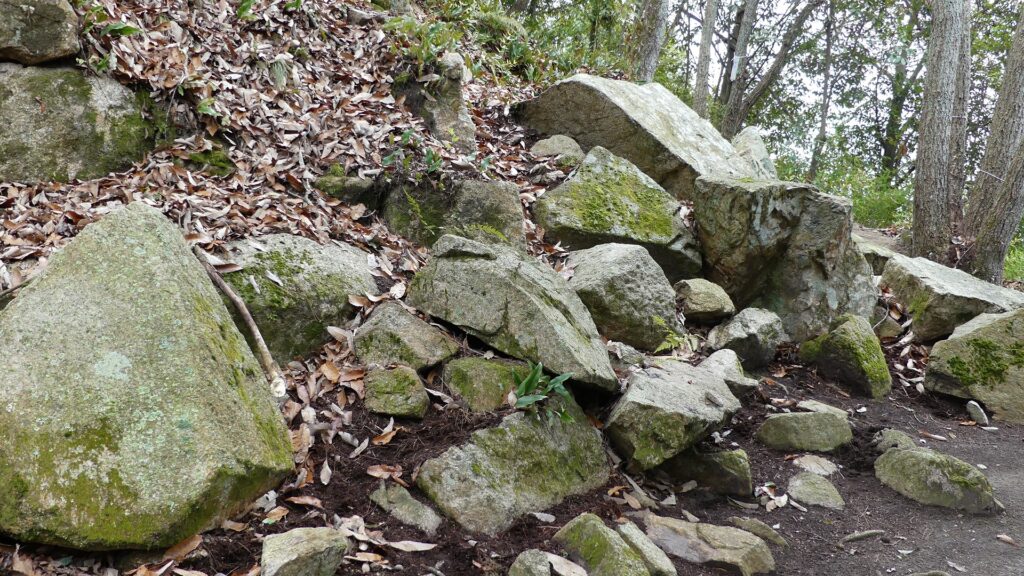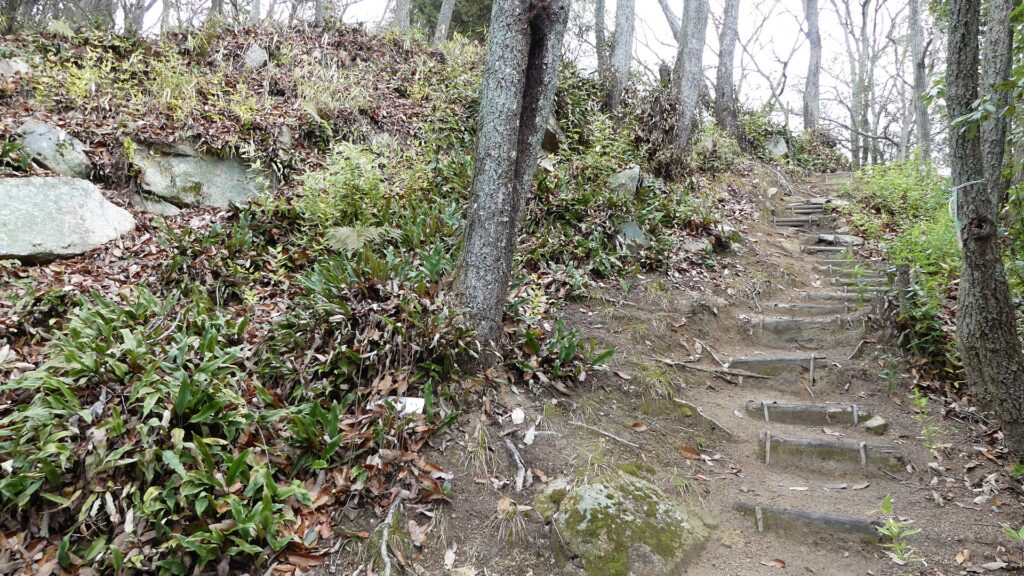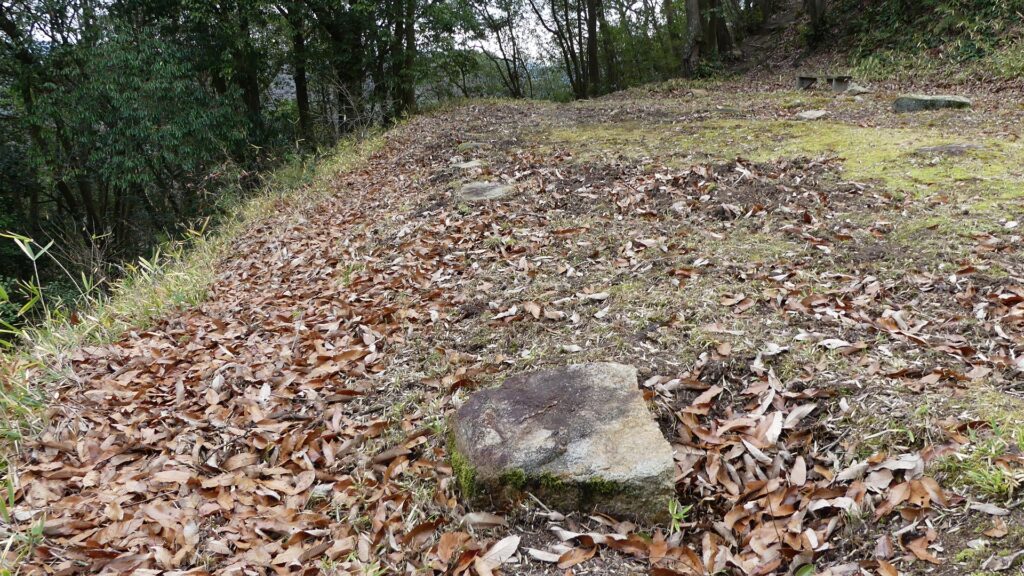Features
Unique Final Enclosure
Tsume-no-maru (meaning the final enclosure) is next to the main enclosure to the southeast. It is also the top of the mountain, where you can enjoy great views of the surrounding area, such as Takayama Castle Ruins, Nuta River, and even Seto Inland Sea. It is also a more interesting place than only the top area. It is the rockiest and steepest area of this mountain. Furthermore, it has lots of stone buddha statues and monuments which mountain priests built. That’s why this site has become unique.
The map around the castle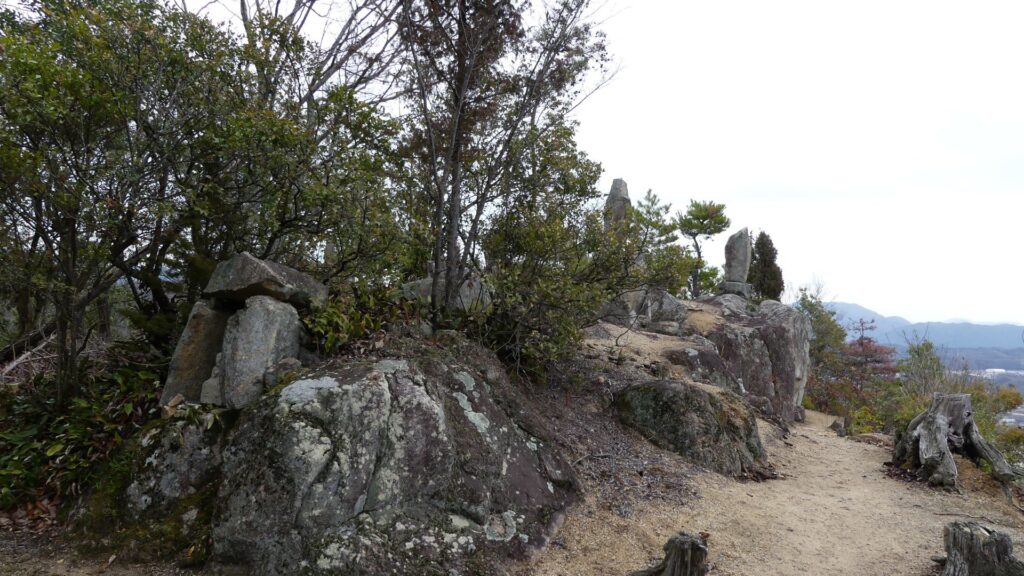
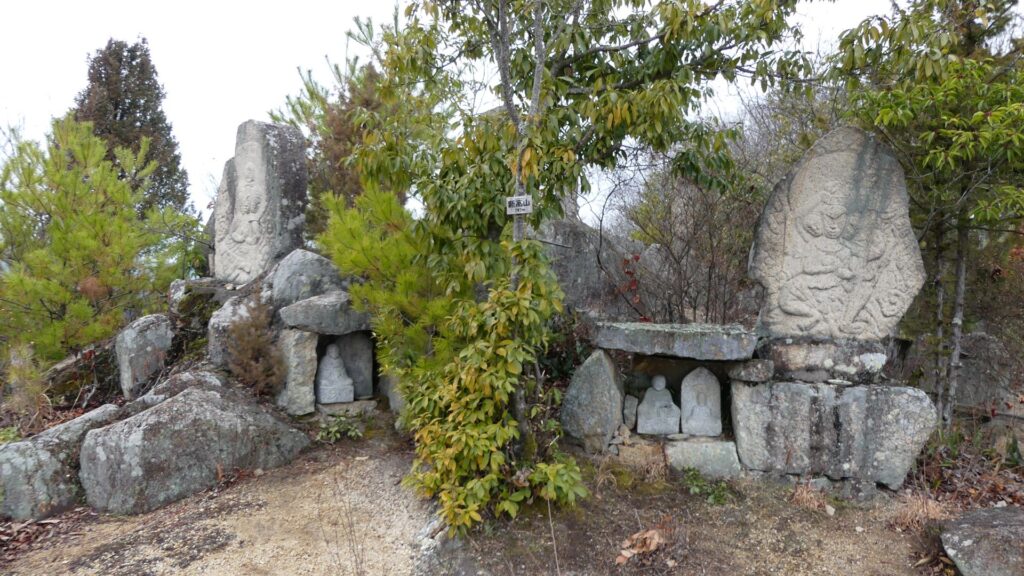
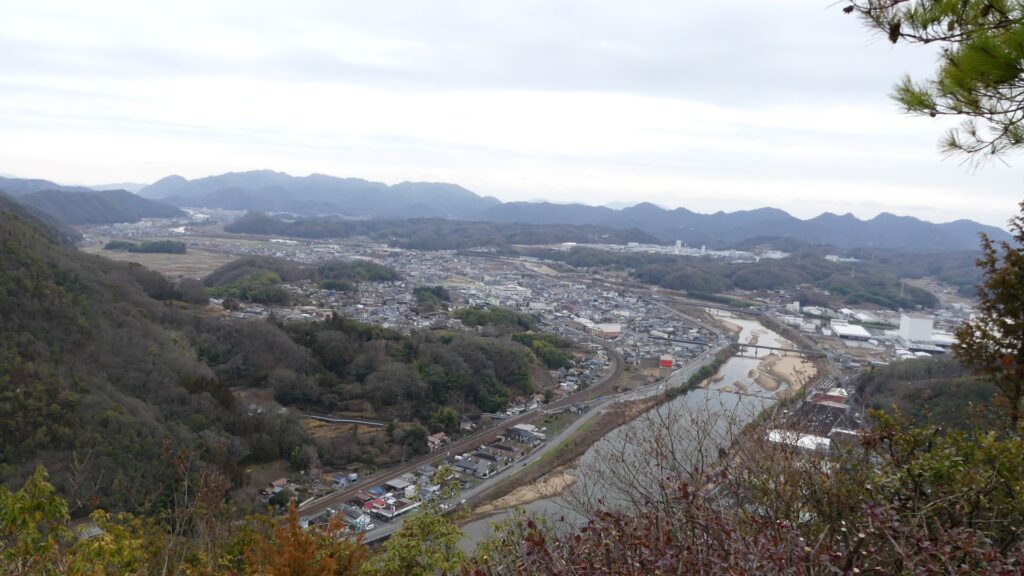
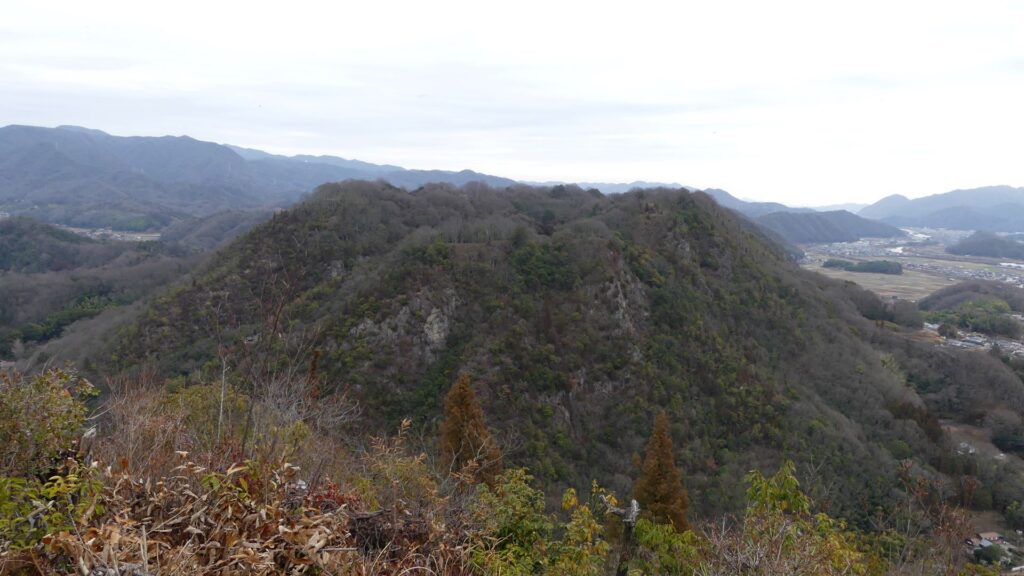
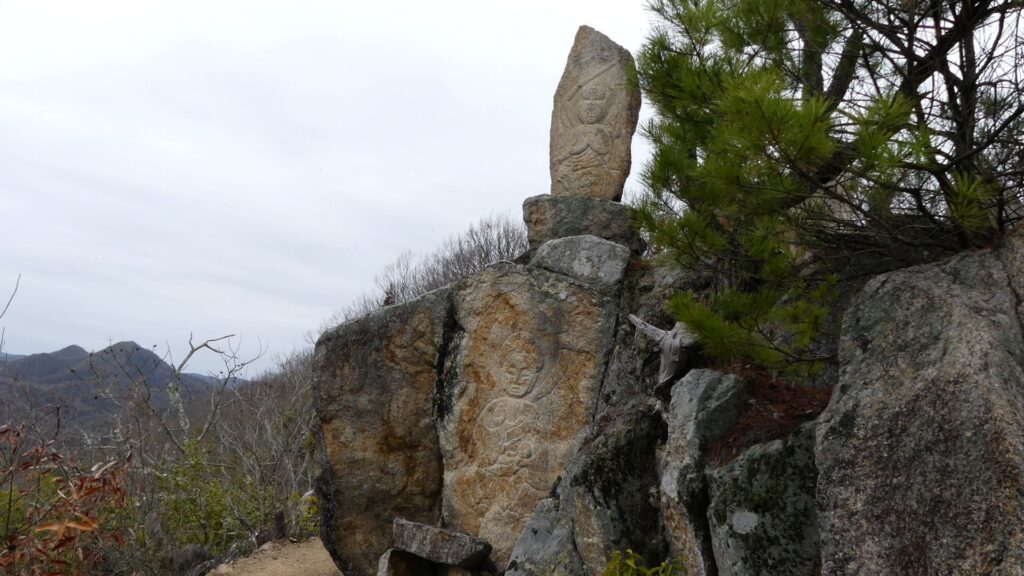
Well Enclosure, Lifeline of Castle
Tsurii-no-dan (meaning the well enclosure) is next to the main enclosure to the north. You can go there from the back gate of the main enclosure by walking down another Masugata system. This Masugata is different. It is called the inter type which is highly improved than that of the main gate (the outer type). It also still has clearly remaining earthen walls which form its square shape.
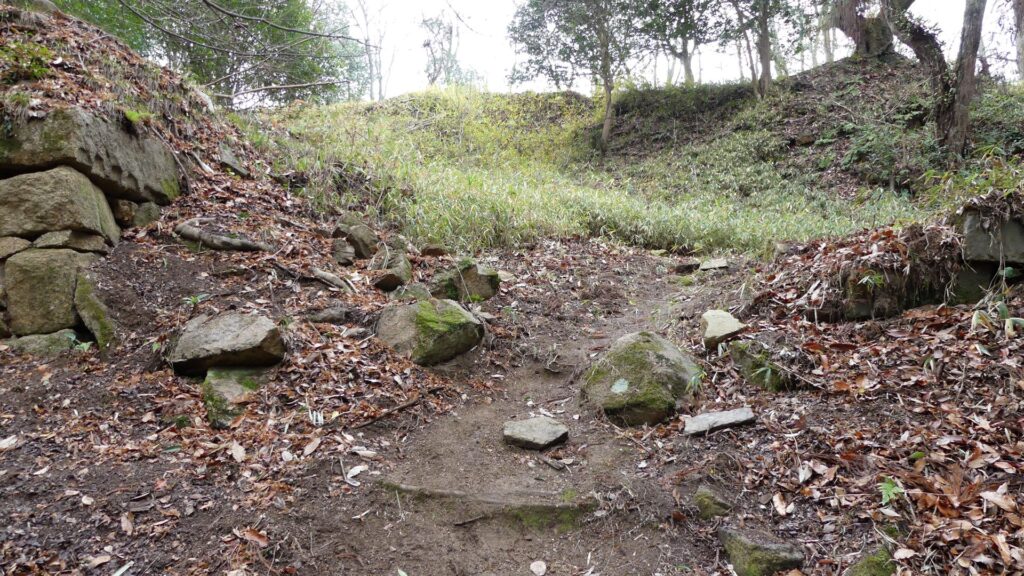

Tsurii-no-dan Enclosure is lower than others, like a valley, which still has six large well ruins. It was very important for the castle not only to be besieged for a long time, but also to be able to live in.
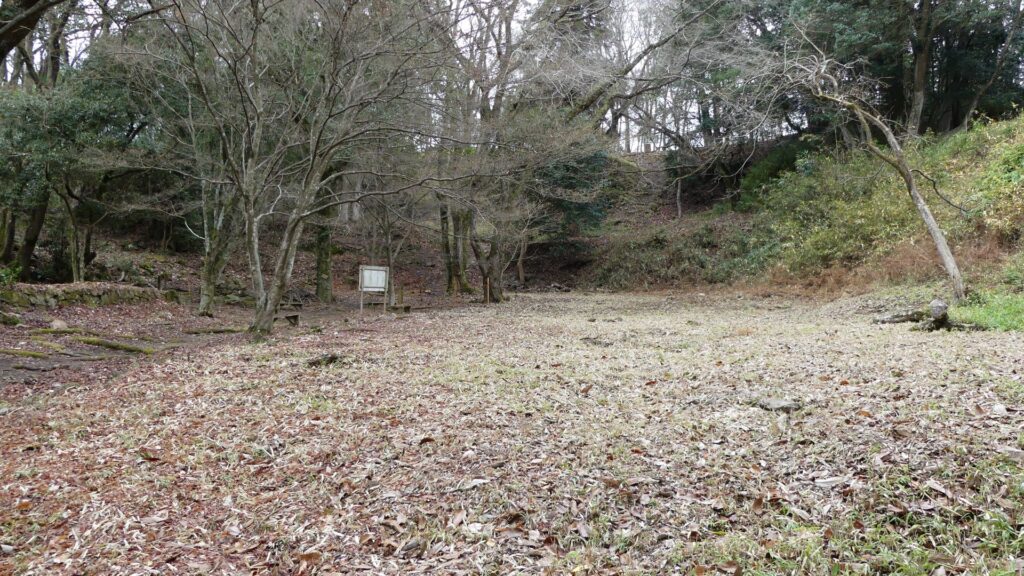
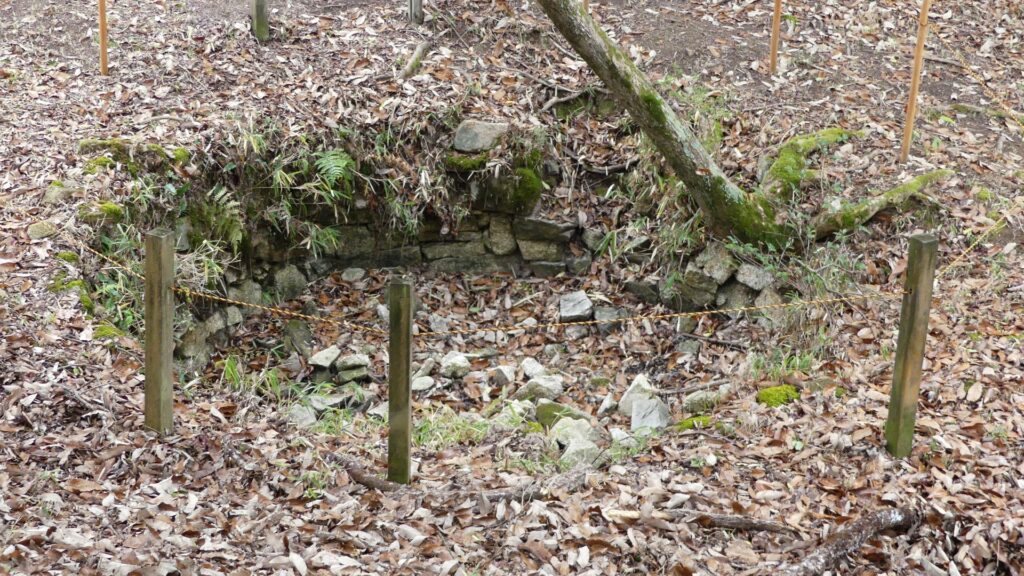
Later History
After Nitakayama Castle was abandoned, its ruins were used as a place for the practices of the mountain priests. That’s why you saw the stone buddha statues and monuments on the top they built. They also built chain fields on the steepest route to the top which experienced climbers still use today. However, general visitors shouldn’t use it. As for the castle ruins, they were designated as National Historic Sites with Mihara and Takayama Castles in 1957.
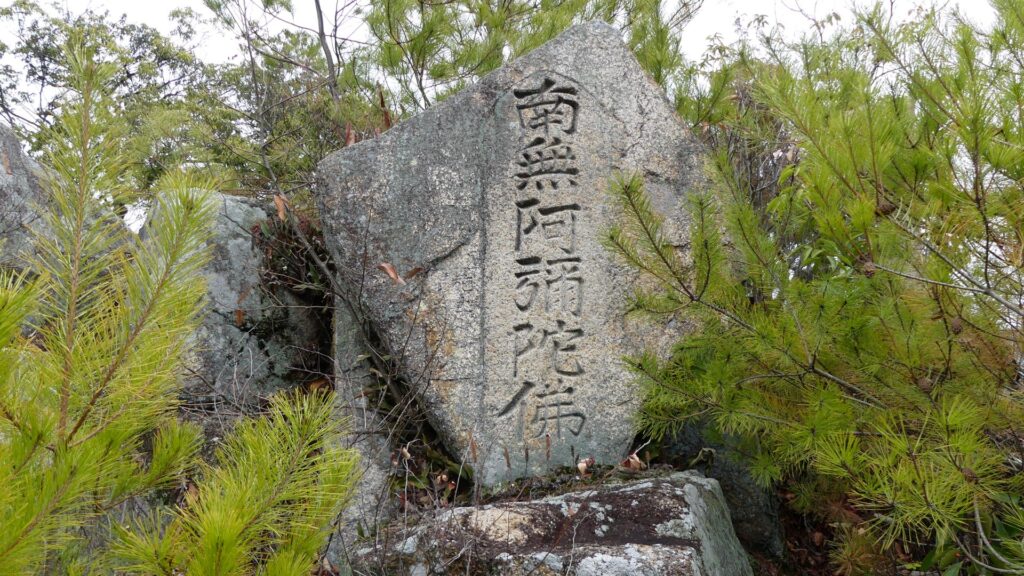
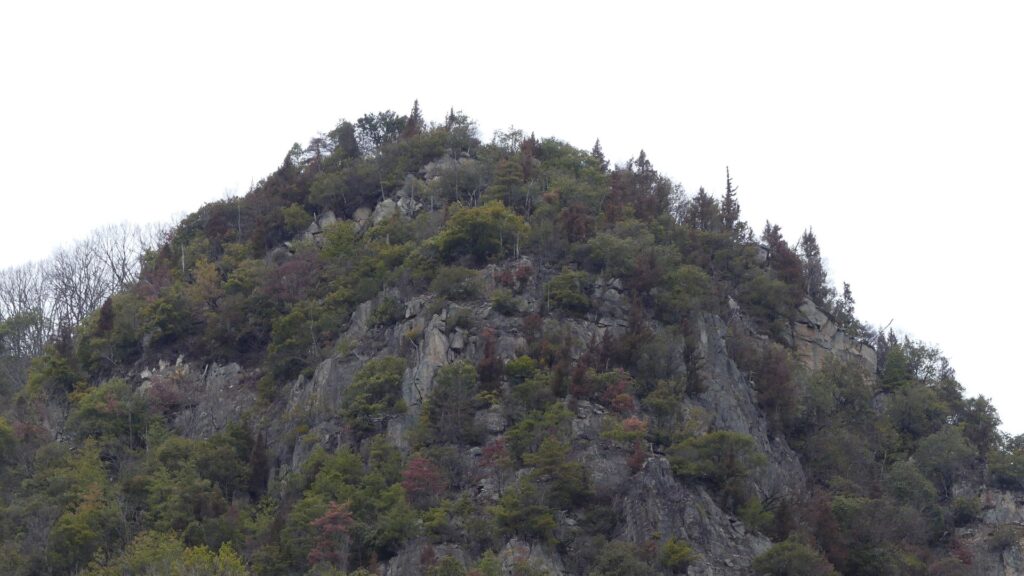
My Impression
Mihara Castle was the final castle of Takakage Kobayakawa. However, I’m not quite sure what the castle looked like when he lived there because it was greatly improved by Fukushima and Asano Clans after Takakage died. Therefore, we can’t find how and where the huge stones from Nitakayama Castle were used in Mihara Castle. That means the ruins of Nitakayama Castle are valuable to see the legacies of Takakage’s period. As for myself, I would like to visit the ruins of Takayama Castle next to Nitakayama Castle someday.
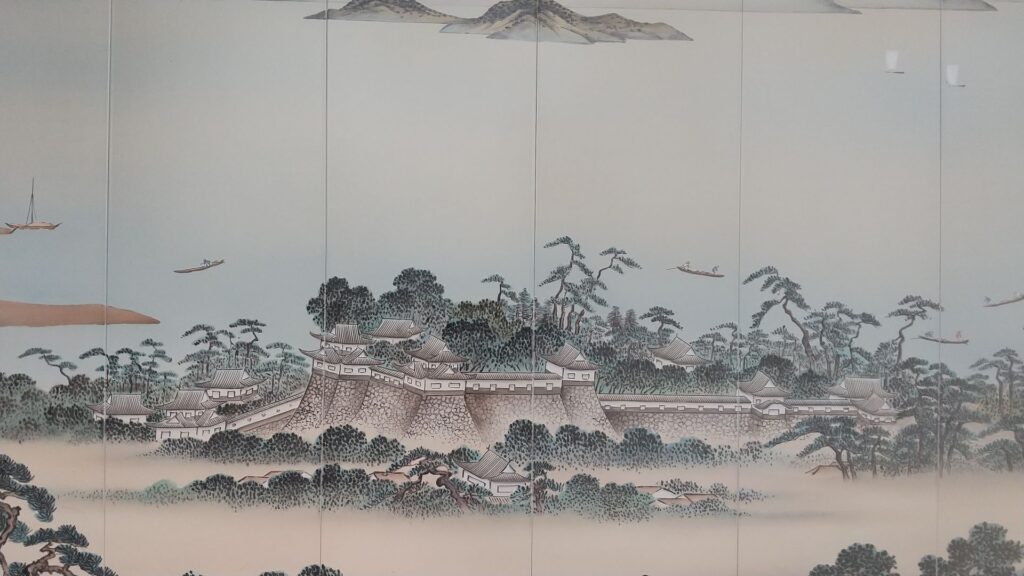
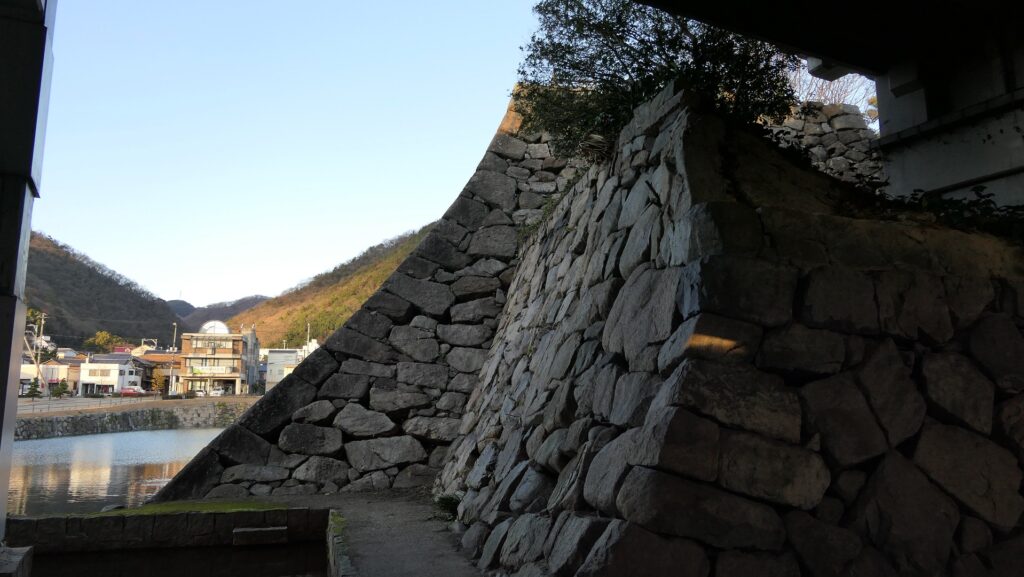
How to get There
If you want to visit there by car, it is about a 4km drive away from Hongo IC on the Sanyo Expressway. There is a parking lot for visitors near the entrance of the hiking course.
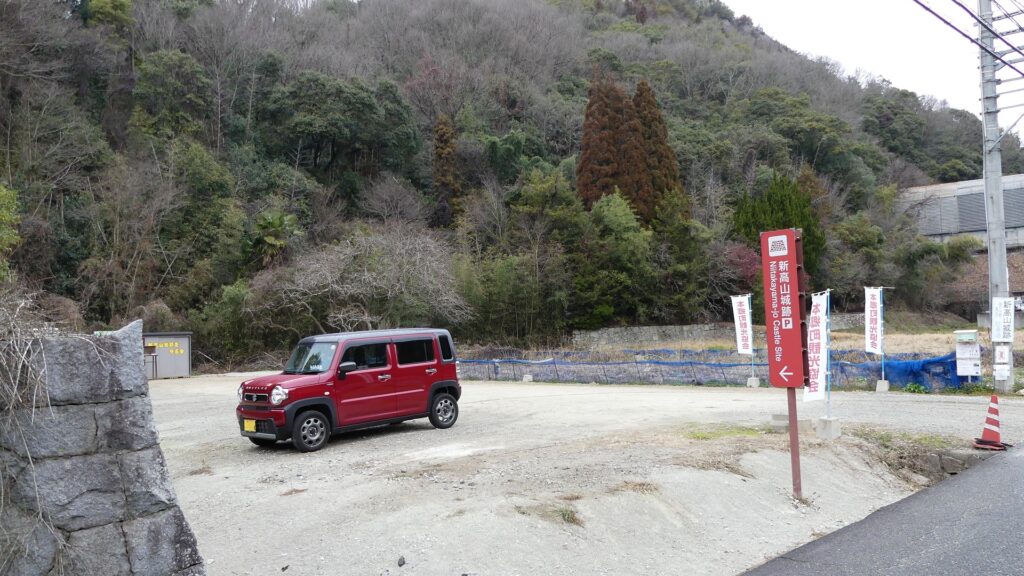
By public transportation, it takes about 25 minutes on foot from JR Hongo Station.
After you get out of the station, turn right and go along the street in front of the station. Then, turn left at the first intersection, and the street leads to a bridge over the Nuta River while it follows a winding road. It may be better for you to walk the sidewalk on the left because the next intersection has a crosswalk only on this side.

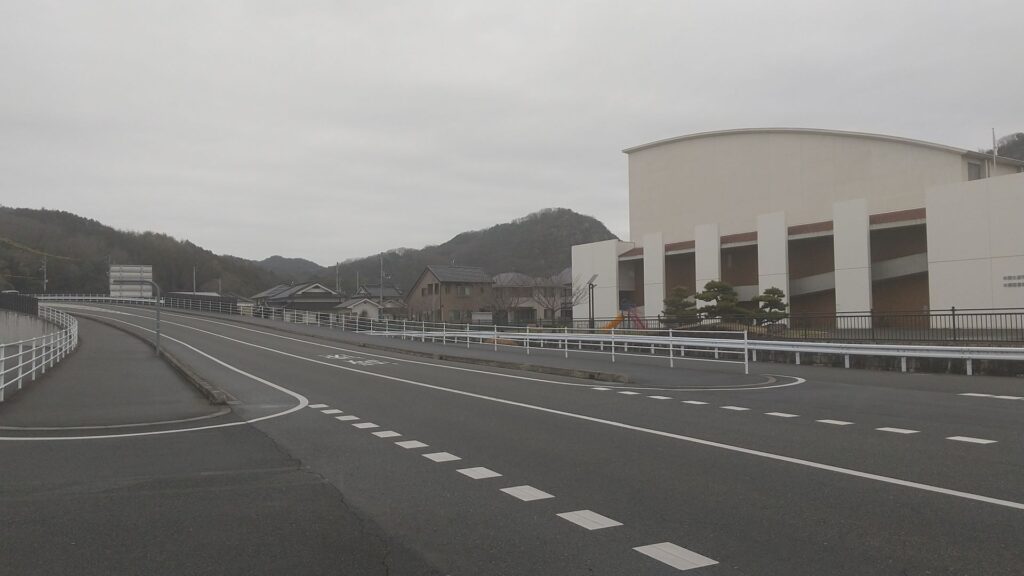
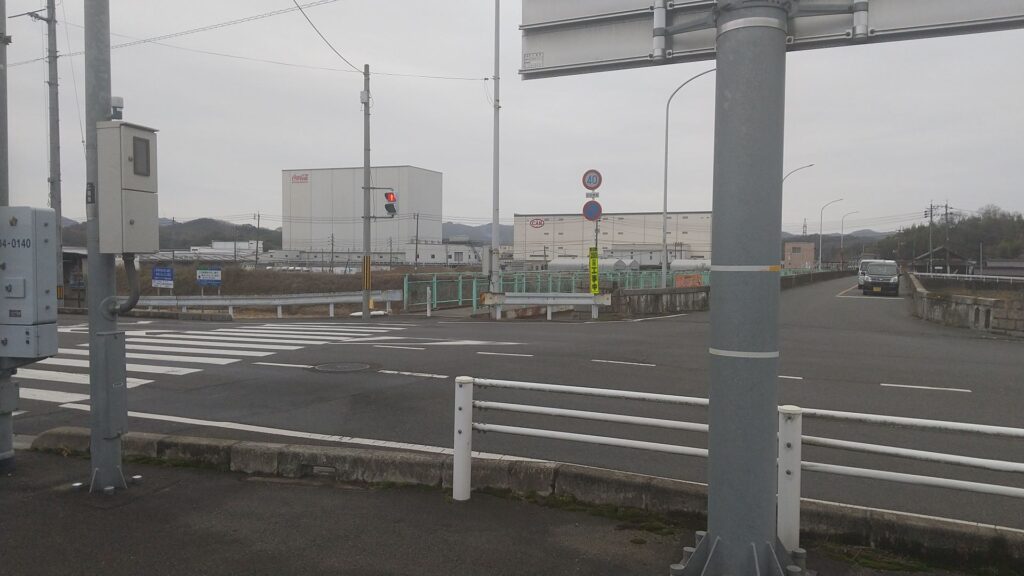
If you walk across it, you will go on the bridge seeing a good view of Nitakayama and Takayama Mountains on the right. After that, turn right, go across another crosswalk and go on a path on the bank beside the river towards the mountains. This path will split into two, but eventually they will meet in front of a shrine. You will eventually arrive at the entrance of the hiking course.
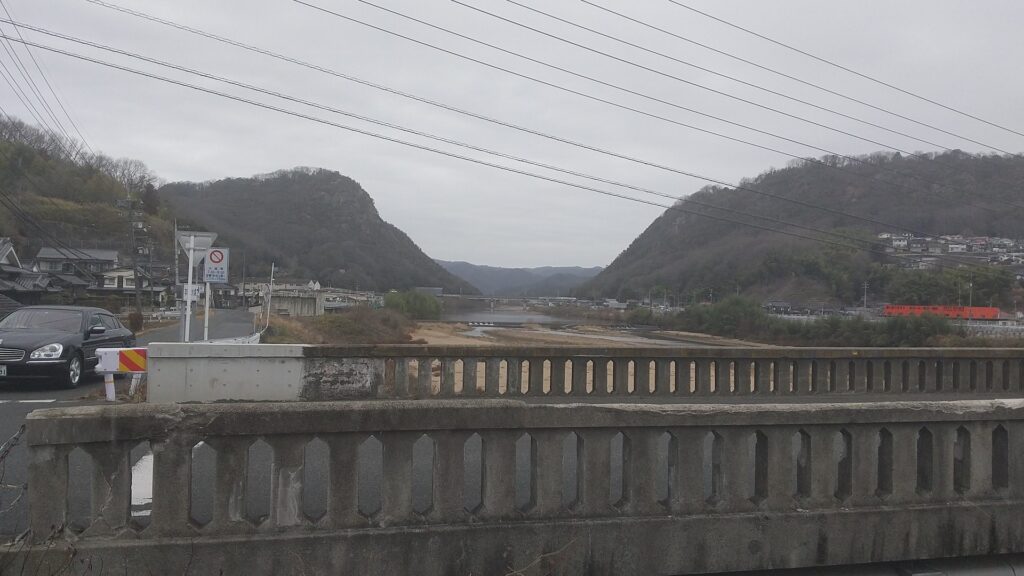
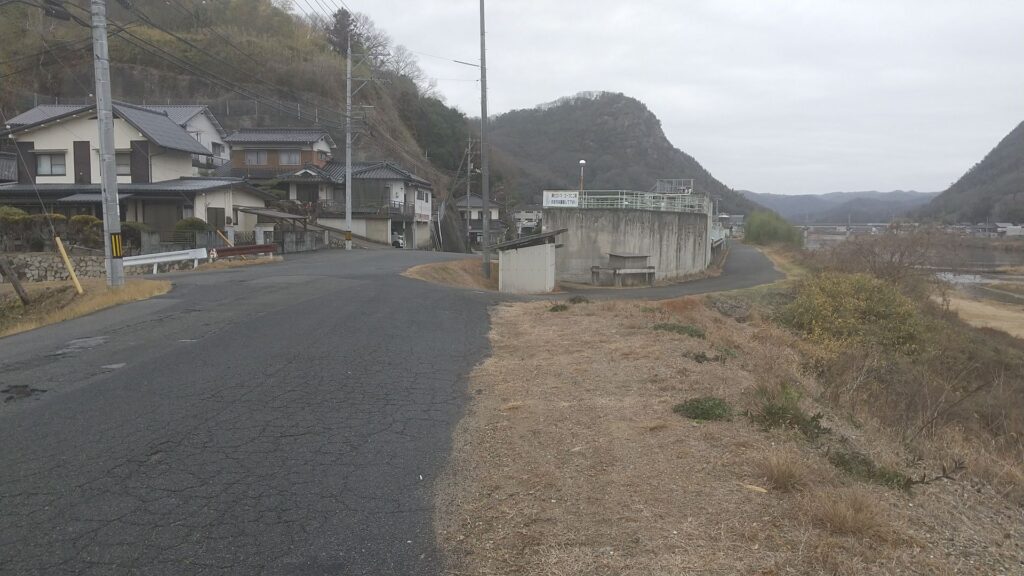

From Tokyo or Osaka to the station: get Sanyo Shinkansen bullet train and transfer to the Sanyo Line at Mihara Station.
That’s all. Thank you.
Back to “Nitakayama Castle Part1”
Back to “Nitakayama Castle Part2”

